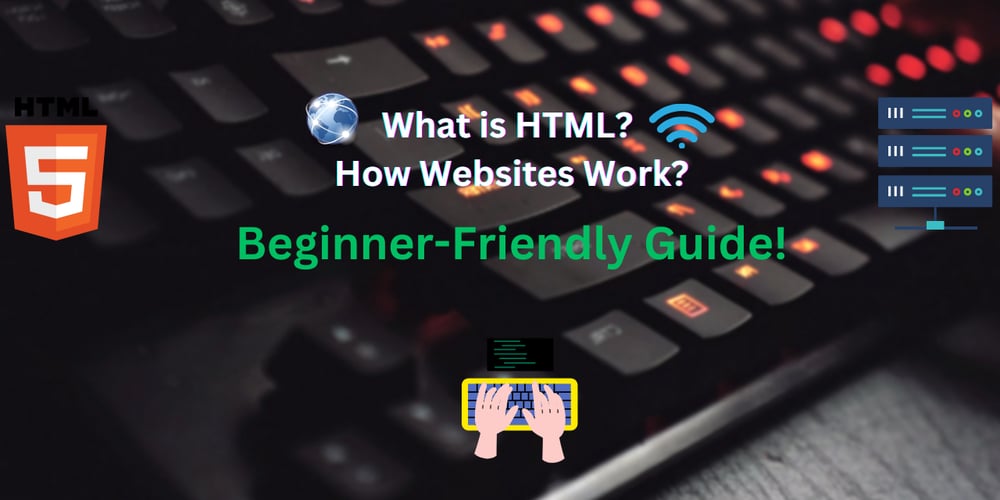How to Build a Marketplace — Detailed Guide for Founders
Since the advent of the internet, websites have undergone significant evolution. Initially, they were seen as virtual homes — digital representations of businesses where customers could learn more about them. Today, websites have become direct sales platforms, enabling businesses to sell products online. With the rise of global trade and diverse business models, we now have countless types of website structures tailored to specific business needs. One such structure is the marketplace. Unlike traditional business websites where a single company interacts with customers, a marketplace is essentially an online bazaar. It brings together multiple sellers and buyers, enabling transactions on a 24/7 e-commerce platform. This model has gained immense popularity in the era of Industry 4.0 and the sharing economy. Marketplaces offer standout advantages, such as transparent pricing, integrated payment systems, and optimized delivery times. These features not only help businesses reach a larger customer base but also significantly boost revenue and profitability. However, building a successful and unique marketplace requires careful planning and execution. I cut the guide from Journeyhorizon’s full article. Let’s check! A Step-by-Step Guide for Founders to build an Online Marketplace Step 1: Choosing the Right Type of Marketplace No matter what products or services you’re selling, the first step on how to build a marketplace is identifying the right business model. Marketplaces can be categorized in two ways: Classification Based on Business Partners C2C Marketplace (Consumer-to-Consumer): This model connects individual sellers or small businesses with consumers on platforms like Shopify or Facebook Marketplace. It’s ideal for individuals with limited capital or resources, as it allows them to start selling with minimal barriers. B2C Marketplace (Business-to-Consumer): This model connects products from businesses or authorized distributors directly to consumers. Unlike C2C, B2C allows businesses to operate as official stores (e.g., Shopee or Lazada Mall), ensuring higher credibility and trust. B2B Marketplace (Business-to-Business): B2B marketplaces facilitate transactions between businesses. Examples include Alibaba.com, which connects manufacturers with wholesalers, and ThomasNet, a platform for industrial suppliers. These platforms often focus on bulk orders, long-term contracts, and specialized industries like manufacturing or construction. Classification Based on Products Marketplaces can also be categorized by the types of products they offer: Vertical Marketplace: These platforms focus on a single category of products or services from multiple suppliers. For example, Etsy specializes in handmade and vintage items, while Zillow focuses exclusively on real estate. Horizontal Marketplace: These platforms offer products or services within the same industry or category. A prime example is Traveloka, which provides travel-related services like flight tickets, hotel bookings, and car rentals. Hybrid Marketplace: Hybrid marketplaces offer a wide range of products across multiple categories. Examples include Amazon, which sell everything from electronics and fashion to home goods and office supplies. Niche marketplaces are gaining traction because they cater to specific audiences with tailored solutions. For instance, Faire (a wholesale marketplace for independent retailers) and Depop (a platform for vintage and unique fashion) have successfully carved out their spaces by addressing the unique needs of their target markets. These platforms often outperform generic ones by offering specialized features, curated experiences, and stronger community engagement. Step 2: Developing a Product Strategy by Defining Core Features & MVP Development for your marketplace Step 3: Building a Product Roadmap Please check the full article! Step 4: Choosing the Right Tech Stack for Marketplace Development Please check the full article! Step 5: Prototyping Time to market is critical for new product development, and your ability to rapidly prototype and develop products ensures viable solutions. Github integration with software development tools makes it easy to seamlessly connect your entire software delivery lifecycle. Step 6: Testing Bugs and feature modification requests are inevitable in the development of an online marketplace. However, maintaining a structured tracking system and efficient issue management ensures your team stays informed, organized, and on track. Testing involves both internal quality assurance (QA) teams and real users through alpha, beta, or user acceptance testing, helping to identify and resolve issues before full deployment. Step 7: Launching & Scaling Your Marketplace with Marketing Once your marketplace is ready, follow these steps to ensure a successful launch and growth: Soft Launch Strategy: How to test y

Since the advent of the internet, websites have undergone significant evolution. Initially, they were seen as virtual homes — digital representations of businesses where customers could learn more about them. Today, websites have become direct sales platforms, enabling businesses to sell products online. With the rise of global trade and diverse business models, we now have countless types of website structures tailored to specific business needs. One such structure is the marketplace.
Unlike traditional business websites where a single company interacts with customers, a marketplace is essentially an online bazaar. It brings together multiple sellers and buyers, enabling transactions on a 24/7 e-commerce platform. This model has gained immense popularity in the era of Industry 4.0 and the sharing economy. Marketplaces offer standout advantages, such as transparent pricing, integrated payment systems, and optimized delivery times. These features not only help businesses reach a larger customer base but also significantly boost revenue and profitability.
However, building a successful and unique marketplace requires careful planning and execution. I cut the guide from Journeyhorizon’s full article. Let’s check!
A Step-by-Step Guide for Founders to build an Online Marketplace
Step 1: Choosing the Right Type of Marketplace
No matter what products or services you’re selling, the first step on how to build a marketplace is identifying the right business model.
Marketplaces can be categorized in two ways:
Classification Based on Business Partners
- C2C Marketplace (Consumer-to-Consumer): This model connects individual sellers or small businesses with consumers on platforms like Shopify or Facebook Marketplace. It’s ideal for individuals with limited capital or resources, as it allows them to start selling with minimal barriers.
- B2C Marketplace (Business-to-Consumer): This model connects products from businesses or authorized distributors directly to consumers. Unlike C2C, B2C allows businesses to operate as official stores (e.g., Shopee or Lazada Mall), ensuring higher credibility and trust.
- B2B Marketplace (Business-to-Business): B2B marketplaces facilitate transactions between businesses. Examples include Alibaba.com, which connects manufacturers with wholesalers, and ThomasNet, a platform for industrial suppliers. These platforms often focus on bulk orders, long-term contracts, and specialized industries like manufacturing or construction.
Classification Based on Products
Marketplaces can also be categorized by the types of products they offer:
- Vertical Marketplace: These platforms focus on a single category of products or services from multiple suppliers. For example, Etsy specializes in handmade and vintage items, while Zillow focuses exclusively on real estate.
- Horizontal Marketplace: These platforms offer products or services within the same industry or category. A prime example is Traveloka, which provides travel-related services like flight tickets, hotel bookings, and car rentals.
- Hybrid Marketplace: Hybrid marketplaces offer a wide range of products across multiple categories. Examples include Amazon, which sell everything from electronics and fashion to home goods and office supplies.
Niche marketplaces are gaining traction because they cater to specific audiences with tailored solutions. For instance, Faire (a wholesale marketplace for independent retailers) and Depop (a platform for vintage and unique fashion) have successfully carved out their spaces by addressing the unique needs of their target markets. These platforms often outperform generic ones by offering specialized features, curated experiences, and stronger community engagement.
Step 2: Developing a Product Strategy by Defining Core Features & MVP Development for your marketplace
Step 3: Building a Product Roadmap
Please check the full article!
Step 4: Choosing the Right Tech Stack for Marketplace Development
Please check the full article!
Step 5: Prototyping
Time to market is critical for new product development, and your ability to rapidly prototype and develop products ensures viable solutions. Github integration with software development tools makes it easy to seamlessly connect your entire software delivery lifecycle.
Step 6: Testing
Bugs and feature modification requests are inevitable in the development of an online marketplace. However, maintaining a structured tracking system and efficient issue management ensures your team stays informed, organized, and on track. Testing involves both internal quality assurance (QA) teams and real users through alpha, beta, or user acceptance testing, helping to identify and resolve issues before full deployment.
Step 7: Launching & Scaling Your Marketplace with Marketing
Once your marketplace is ready, follow these steps to ensure a successful launch and growth:
- Soft Launch Strategy: How to test your marketplace before going live
- A soft launch involves releasing your marketplace to a limited group of users for testing and feedback. This helps you identify and fix any bugs or issues before the official launch, ensuring a smoother experience for your users.
- User Acquisition: SEO, paid ads, and influencer partnerships for user acquisition
- A comprehensive marketing strategy is crucial for attracting users to your marketplace. This includes search engine optimization (SEO), paid advertising campaigns, and collaborations with influencers in your niche.
- Key Metrics to Track: Monitor metrics like Gross Merchandise Value (GMV), customer acquisition cost (CAC), and user retention to measure success.




















































%20Abstract%20Background%20112024%20SOURCE%20Amazon.jpg)






















































































































![[The AI Show Episode 142]: ChatGPT’s New Image Generator, Studio Ghibli Craze and Backlash, Gemini 2.5, OpenAI Academy, 4o Updates, Vibe Marketing & xAI Acquires X](https://www.marketingaiinstitute.com/hubfs/ep%20142%20cover.png)
























































































































































































































































-Nintendo-Switch-2-–-Overview-trailer-00-00-10.png?width=1920&height=1920&fit=bounds&quality=80&format=jpg&auto=webp#)





















_Anna_Berkut_Alamy.jpg?#)













































































































![YouTube Announces New Creation Tools for Shorts [Video]](https://www.iclarified.com/images/news/96923/96923/96923-640.jpg)





































































![[Weekly funding roundup March 29-April 4] Steady-state VC inflow pre-empts Trump tariff impact](https://images.yourstory.com/cs/2/220356402d6d11e9aa979329348d4c3e/WeeklyFundingRoundupNewLogo1-1739546168054.jpg)





























































